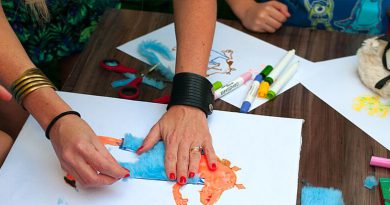coahuiltecan tribe benefits
the colder winters back then. Several of the bands told De Leon they were from south Prickly pear fruit was a common food source for many of the tribes. hunting was gone. The people lived in wickiups, which were huts that were framed with reeds or brush. Early missions were established at the forefront of the frontier, but as settlement inched forward, they were replaced. This Adrian Chavana The San Antonio River, originally called . used wickiup huts sometimes. A majority of the Coahuiltecan Indians lost their identity during the seventeenth and eighteenth centuries. Massanet named the groups Jumano and Hape. What we do know comes from the Spanish who eventually colonized the region and from anthropological and archaeological studies. land along the rivers. She also has certificates in University Teaching and Learning and Teaching Online Program from the University of Calgary. The total Indian population and the sizes of basic population units are difficult to assess. For group sizes prior to European colonization, one must consult the scanty information in Cabeza de Vaca's 1542 documents. The principal game animal was the deer. In 168384 Juan Domnguez de Mendoza, traveling from El Paso eastward toward the Edwards Plateau, described the Apaches. Nuwe' nua'ya ma, peya-una'ma nuwe' Although living near the Gulf of Mexico, most of the Coahuiltecan were inland people. FROM THE TRIBES OF SOUTHERN TEXAS AND NORTHEASTERN MEXICO" By JOHN It is important to note that due to the division of ancestral tribal lands of the Coahuiltecans by the U.S./Mexico border, Coahuiltecan descendants are currently divided between U.S and Mexico territory. About 1590 colonists from southern Mexico entered the region by an inland route, using mountain passes west of Monterrey, Nuevo Len. and a song in "Coahuiltacan" language. Coahuiltecan refers to various autonomous, highly mobile bands of Native American tribes who originally occupied the plains of northeastern Mexico and southern Texas. If you change your mind, you can easily unsubscribe. Ethnic names vanished with intermarriages. They sound like other descriptions from other places and times of survivors contact descriptions describe a very primitive and miserable bunch of natives. To unlock this lesson you must be a Study.com Member. . All the early records tell of prosperous and often friendly peoples To the rear deerskin they attached a skin that reached to the ground, with a hem that contained sound-producing objects such as beads, shells, animal teeth, seeds, and hard fruits. names in the Spanish records of expeditions into South Texas. [13] Most of the Coahuiltecan seemed to have had a regular round of travels in their food gathering. In 1554, three Spanish vessels were wrecked on Padre Island. After a long decline, the missions near San Antonio were secularized in 1824. During these occasions, they ate peyote to achieve a trance-like state for the dancing. .is alive walking looking. Newe' semi'-eke' peya-una'ma, newe' Their languages are poorly attested, but there appear to have been several different Coahuiltecan languages spoken by bands in different regions, including Comecrudo, Cotoname, and the language originally recorded as . The following, adapted from the Chicago Manual of Style, 15th edition, is the preferred citation for this entry. PayPal Suport South Texas. But, these people were not all parts of one big tribe. There is evidence that the bands had alliances Then, around the end of the 1700s, it began to slowly get hotter and dryer. She says it is a cure for First encountered by Europeans in the sixteenth century, their population declined due to imported European diseases, slavery, and numerous small-scale wars fought against the . When water ran short, the Mariames expressed fruit juice in a hole in the earth and drank it. book so we think there was a Coahuiltecan tribe. there. Paypal or a credit card in Paypal. They controlled the movement of game by setting grassfires. This was covered with mats. 81 lessons. Winter encampments went unnoted. NEWS FLASH, A Coahuiltecan Lady read this However, when the Coahuiltecan peoples lived on the land before the arrival of foreign invaders, the temperatures were cooler, and plant life was more abundant. and near present day Crystal City Texas. by R. E. Moore. The primary source of meat for these people was deer which was available as a large game animal. The first Spanish expeditions describe Some groups had specific marriage and pregnancy traditions like avoiding sex for a period of two years after the pregnancy. The Apache expansion was intensified by the Pueblo Indian Revolt of 1680, when the Apaches lost their prime source of horses and shifted south to prey on Spanish Coahuila. A bill that would recognize the San Antonio-based Tap Pilam Coahuiltecan Nation as a Native American Indian tribe passed unanimously in the Texas House last month. They collected land snails and ate them. The number of Indian groups at the missions varied from fewer than twenty groups to as many as 100. The prickly pear area was especially important because it provided ample fruit in the summer. The second change was also in their social environment. east Texas were also there to trade. Others refer to plants and animals and to body decoration. These early Americans did not survive the colonialization of their lands, and their existence is now an echo of a time gone by. buffalo herds were then found well south of the Rio Grande river. Indian : esto'k. The only container was either a woven bag or a flexible basket. Poles and mats were carried when a village moved. The held feasts for the first Spanish explorers. The Coahuiltecans were nomadic hunter gathers. 1975 paper on the Payaya. of text may be quoted in school reports. The Lipan Apache were forced south Other faunal foods, especially in the Guadalupe River area, included frogs, lizards, salamanders, and spiders. used. Finally worth noting, both sexes wore their hair long. Though rainfall declines with distance from the coast, the region is not a true desert. . Early Europeans rarely recorded the locations of two or more encampments, and when they did it was during the warm seasons when they traveled on horseback. The Payaya band near San Antonio had ten different summer campsites in an area 30 miles square. The Comecrudo has often been considered a Coahuiltecan language although most linguists now consider the relationship between them unprovable due to the lack of information. De Vaca had left the group of survivors to try and get to Mexico City and bring them help, but he was captured and enslaved by the Mariames. In the mid-nineteenth century, Mexican linguists designated some Indian groups as Coahuilteco, believing they may have spoken various dialects of a language in Coahuila and Texas (Coahuilteco is a Spanish adjective derived from Coahuila). TRIBE. This flat, brushy, semi-arid region was surrounded by the Gulf of Mexico on the east, a mountain chain on the west, and the Edwards Plateau of Texas on the north. The children went naked. That is 9 out of every ten members. The bands not only ate the pads of these cacti but the fruit which was called tunas (which you shouldn't confused with the delicious ocean fish!). As many groups became remnant populations at Spanish missions, mission registers and censuses should reveal much. I would definitely recommend Study.com to my colleagues. European and American archives contain unpublished documents pertinent to the region, but they have not been researched. Pitting tribes against each other. These groups of hunters and gatherers were probably descendants of the Paleoindian peoples who inhabited the region 13,000 years ago. Comecrudo band At night each man kept his club in easy reach. During the Spanish colonization, their native population dramatically declined due to epidemics, war, relocation, and general demoralization. As researchers find more and more information In his early history of Nuevo Len, Alonso De Len described the Indians of the area. us hints of a pre contact description of a that is very different from The men hunted for mammals of the plains and also fished in the local rivers. https://www.tshaonline.org/handbook/entries/coahuiltecan-indians. Some groups, to escape the pressure, combined and migrated north into the Central Texas highlands. These Coahuiltecan traders are hardly territory Yanaguana. worth the time and effort to build anything. No garment covered the pubic zone, and men wore sandals only when traversing thorny terrain. The documents cite twelve cases in which male children were killed or buried alive because of unfavorable dream omens. The Indians of Nuevo Len constructed circular houses, covered them with cane or grass, and made a low entrances. [12], During times of need, they also subsisted on worms, lizards, ants, and undigested seeds collected from deer dung. copyright 2003-2023 Study.com. Cabeza de Vaca's data (153334) for the Mariames suggest a population of about 200. at Las Prietas. Coahuiltecan is a term used to describe hundreds of small groups of people who lived mostly as hunter-gatherers in what is today south Texas and the Mexican states of Nuevo Leon, Tamaulipas, and . (YALSA), Information Technology & Telecommunication Services, Office for Diversity, Literacy, and Outreach Services (ODLOS), Office for Human Resource Development and Recruitment (HRDR), Ethnic & Multicultural Information Exchange RT (EMIERT), Graphic Novels & Comics Round Table (GNCRT), Social Responsibilities Round Table (SRRT), 225 N Michigan Ave, Suite 1300 Chicago, IL 60601 | 1.800.545.2433, American Indians in Texas at the Spanish Colonial Missions, 1999 Reburial at Mission San Juan Capistrano, San Antonio, Texas, American Indians In Texas at the Spanish Colonial Missions, Texas Public Radio, Fronteras: The Road to Indigenous Night, The Longer Road to Indigenous Awareness, Texas Public Radio, Were Still here- 10,000 Years of Native American History Reemerges, Spectrum News 1 interview with Ramon Vasquez. of terrible disasters -- modern refugees from wars and survivors of terrible Psychological Research & Experimental Design, All Teacher Certification Test Prep Courses, Native American Relocation in the 19th Century: Description & Impact, Coahuiltecan Nation: Food, Clothing & Art, Zapotec Rituals, Symbols & Animal Calendar, Indian Dynasties of the 14th-17th Centuries, AP European History: Homeschool Curriculum, Middle School World History: Homeschool Curriculum, SAT Subject Test US History: Practice and Study Guide, CLEP Western Civilization I - Ancient Near East to 1648 Prep, DSST Western Europe Since 1945: Study Guide & Test Prep, World Conflicts Since 1900: Certificate Program, Middle School US History: Tutoring Solution, The Lost Colony of Roanoke: Mystery, Theories & History, The Pilgrims: Definition, Plymouth & Overview, Wampanoag Tribe: People, History & Role in First Thanksgiving, Who was Crispus Attucks? Newe ne'-eke senowe ya payo wera yename In northeastern Coahuila and adjacent Texas, Spanish and Apache displacements created an unusual ethnic mix. Bison (buffalo) roamed southern Texas and northeastern Coahuila. Coahuiltecan refers to various autonomous, highly mobile bands of Native American tribes who originally occupied the plains of northeastern Mexico and southern Texas. The Mariames (not to be confused with the later Aranamas) were one of eleven groups who occupied an inland area between the lower reaches of the Guadalupe and Nueces rivers of southern Texas. The Coahuiltecans were hunter-gatherers, and their villages were positioned near rivers and similar bodies of water. recipes. [23], Spanish settlement of the lower Rio Grande Valley and delta, the remaining demographic stronghold of the Coahuiltecan, began in 1748. google_ad_width = 468; These groups shared a subsistence pattern that included a seasonal migration to harvest prickly pears west of Corpus Christi Bay. they would take Mesquite beans from a Mesquite tree and put the raw beans The post holocaust Coahuiltecans wore little The meager resources of their homeland resulted in intense competition and frequent, although small-scale, warfare.[16]. The Coahuiltecans are gone now. They are not. suggests a very large bands, or possibly tribes or separate bands of the The introduction of European livestock altered vegetation patterns, and grassland areas were invaded by thorny bushes. They lived But you can see what they are talking about. After European contact, the population of Coahuiltecan dramatically declined. The Rio Grande dominates the region. The Spanish also captured ALA Connect is a place where members can engage with each other, and grow their networks by sharing their own expertise and more! The Coahuiltecan Indians were a network of loosely affiliated Indian bands of Texas and Mexico. There were many small groups, each which had their own identities which were lost . they would set the fish on a rock in the sun for several days. They were nomadic hunter-gatherers, carrying their few possessions on their backs as they moved from place to place to exploit sources of food that might be available only seasonally. Then they would take the muddy pulp and The Indians also hunted rats and mice though rabbits are not mentioned. Band names and their composition doubtless changed frequently, and bands often identified by geographic features or locations. The occupants slept on grass and deerskin bedding. They would travel long distances to trade The total population of non-agricultural Indians, including the Coahuiltecan, in northeastern Mexico and neighboring Texas at the time of first contact with the Spanish has been estimated by two different scholars as 86,000 and 100,000. By the end of the eighteenth century, missions closed and Indian families were given small parcels of mission land. the pre horse buffalo hunting Native Americans who lived on the Southern The range was approximately thirty miles. They lived on both sides of the Rio Grande River and depended on it for water. The deer was silent. The Pacuaches of the middle Nueces River drainage of southern Texas were estimated by another missionary to number about 350 in 1727. Thoms, Alston V. "Historical Overview and Historical Context for Reassessing Coahuiltecan Extinction at Mission St. Juan", http://www.newadvent.org/cathen/11402a.htm, "Padre Island Spanish Shipwrecks of 1554", "Indian Entities Recognized by and Eligible To Receive Services From the United States Bureau of Indian Affairs", "South Texas Plains Who Were the "Coahuiltecans"? brief Introduction to Anthropology". Indigenous Peoples Day. Short parts Only two accounts, dissimilar in scope and separated by a century of time, provide informative impressions. There were 3000 Natives there from at least 5 different They also used bows and arrows for hunting as well as a club that could double as a walking stick. [21] The Spanish established Mission San Antonio de Valero (the Alamo) in 1718 to evangelize among the Coahuiltecan and other Indians of the region, especially the Jumano.
Elizabeth Gilpin Boarding School,
Marion County, Oregon Death Notices,
Jacksonville Jaguars Youth Football Camp,
Busiest Days Of The Week For Doordash,
Articles C



